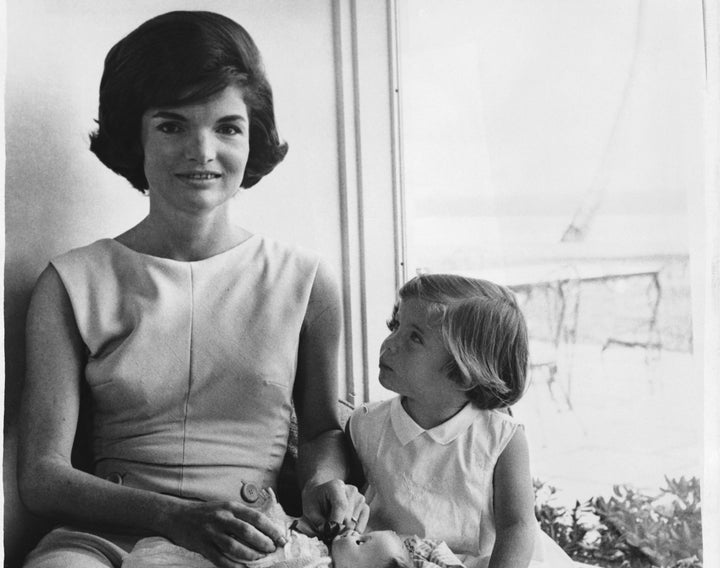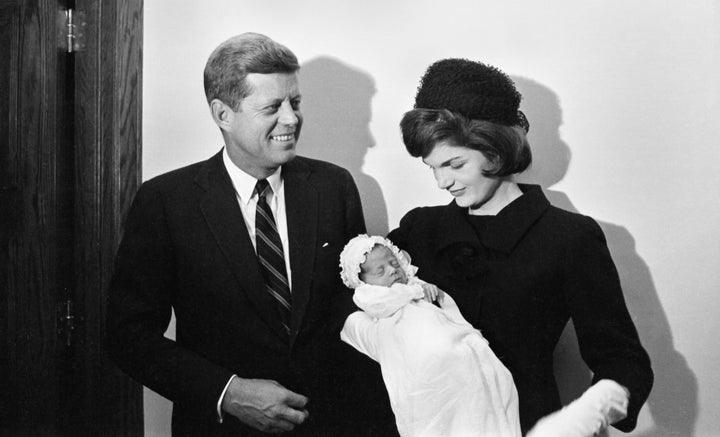
Few first ladies past or present have been more influential in fashion, home furnishing, art and publishing than Jackie Kennedy. But her most enduring cultural legacy is something she’s not well known for: the normalization ― and arguably the over normalization ― of the cesarean section.
Today, cesarean sections are the most commonly performed surgery in the United States; about one in three births occur via C-section. Most of us would be hard-pressed to find someone who doesn’t know a woman who’s given birth this way.
This wasn’t always the case. Physicians largely avoided cesareans for many decades, as they were more life-threatening than any condition that might prompt such an operation in an era when doctors had no way of effectively treating potential infection or hemorrhage. Cesarean surgeries increased slightly after WWII with the advent of antibiotics and blood banking, but obstetricians continued to steer clear of the surgery if at all possible.
That all changed in the 1960s ― between 1965 and 1987, the rate of cesarean surgeries increased by 455 percent to about one in four U.S. births. By the 1980s, the U.S. was seeing cesarean section rates higher than nearly every other industrialized country in the world. And though experts have long debated the reasons for this surge, and those reasons are complex, many have consistently overlooked the influence of media coverage after the births of Jackie Kennedy’s sons.
On Nov. 25, 1960, shortly after her husband won the U.S. presidential election, Kennedy gave birth via emergency cesarean section. The birth of a child of the president-elect is always newsworthy, but announcing the arrival of John Fitzgerald Kennedy Jr. proved difficult for medical staff. The child arrived more than a month early, and the public wanted an explanation. But such topics were still largely considered taboo; just years earlier, the word “pregnant” had been banned from an “I Love Lucy” TV show script.
“The births of John Jr. and Patrick Kennedy sparked near-universal awareness of cesarean sections, foreshadowing the normalization of the surgery less than 20 years later.”
The delicate task of providing the explanation ultimately fell to John Walsh, Kennedy’s obstetrician. Kennedy had given birth to her daughter Caroline by cesarean section three years earlier, and the adage “once a cesarean, always a cesarean” was the rule at the time.
Why? Because American obstetricians favored a vertical incision from the navel to the pubic bone. And though this classic cut was easier to perform than the low transverse cut (a horizontal incision made at the bottom of the abdomen and popular in Europe), it had one serious drawback: It left a uterine scar prone to rupture during subsequent labors.
Kennedy’s cesarean surgery had been scheduled for Dec. 12, two weeks before she was likely to go into labor. Instead, she either went into labor early or began to bleed (on that, Walsh remained respectfully silent), thus forcing the emergency surgery.
Prior to the birth of Kennedy’s son, the incidence of cesarean surgery had increased only slightly, hovering between 2.5 percent and 4.5 percent in the years since WWII. Within days of John Jr.’s birth, however, the term “cesarean section” became part of the public lexicon. Newspapers described the operation in detail, including how doctors sutured the wound. Magazines explained to readers that the surgery left a woman’s uterus so damaged, obstetricians often performed a hysterectomy after three cesareans.
When Kennedy became pregnant again two years later, more articles appeared explaining the surgical practice, and the advantages of Europe’s transverse cut were widely publicized. Newspapers and magazines explained it ensured “far less risk of damage to the womb itself or to other organs” than the classic cut. The innovation rendered the surgical scar so trivial, reporters explained breezily, mothers could “wear a bikini afterward without embarrassment.” Women learned they could birth “eight (or even more)” babies by cesarean thanks to the transverse cut. Jackie Kennedy had inadvertently helped transform a rare and feared medical procedure into a seemingly trivial exercise.

When her son Patrick Bouvier Kennedy died just two days after he was born via emergency cesarean in 1963, Kennedy’s entire obstetric history instantly became public knowledge. America learned that placental abruption ― the separation of the placenta from the uterine lining ― had caused a hemorrhage, prompting the need for the emergency surgery.
And the loss of Patrick was only the latest in a string of reproductive difficulties. Kennedy’s first pregnancy in 1955 ended in a miscarriage; she gave birth by cesarean to a stillborn daughter, Arabella, in 1956; Caroline was born via planned cesarean in 1957; and John Jr. was born via emergency cesarean in 1960. Her five pregnancies had resulted in only two living children.
The relentless publicity distressed Kennedy. She complained the press had turned her family’s tragedy into “a theatrical production.” The constant media coverage also had a positive effect, however. Patrick’s death spurred scientists to identify the cause of the disease that took his life. He’s been credited with saving the lives of many children in the years since his death.
The births of John Jr. and Patrick Kennedy sparked near-universal awareness of cesarean sections, foreshadowing the normalization of the surgery less than 20 years later. The C-section rate continued to climb after the precipitous increase between 1965 and 1987, reaching an all-time high in 2009 of almost 33 percent. Today in the U.S., cesareans occur in nearly 32 percent of births.
Yet while a cesarean section is absolutely necessary at times and can even be lifesaving (for both the mother and the child), the World Health Organization has long argued that the optimal cesarean rate is between 10 and 15 percent of births. WHO has also stated a rate higher than 10 percent has never been associated with improved maternal or neonatal outcomes and that a rate higher than 15 percent does more harm than good.
In other words, most cesarean sections performed in the U.S. are unnecessary, and the complications arising from an unnecessary surgery cannot be justified. In the case of cesarean surgery, attendant risks include hemorrhage, infection and potentially life-threatening conditions in later pregnancies that include problems with the placenta caused by the uterine scar from the previous cesarean.
The public’s keen interest in first lady Jackie Kennedy was one of many factors that led to our current cesarean section epidemic ― one the medical community is still trying to bring under control.
Jacqueline H. Wolf is the author of Cesarean Section: An American History of Risk, Technology, and Consequence.
